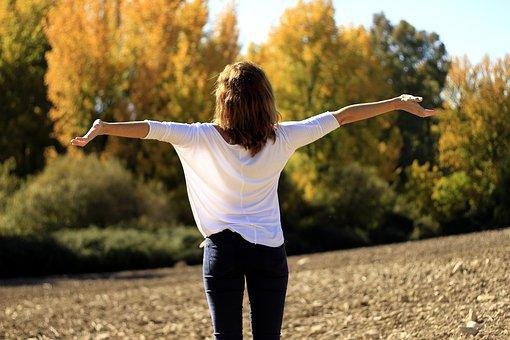Inhale, exhale
jewel.lexchron@gmail.com
When stressed, you may experience panic, chest tightness and more overwhelming feelings.
My mom suffers from anxiety. Her doctor taught her to practice a breathing technique.
…
This item is available in full to subscribers.
Subscribe to continue reading. Already a subscriber? Sign in
Get 50% of all subscriptions for a limited time. Subscribe today.
Please log in to continueNeed an account?
|
Inhale, exhale
jewel.lexchron@gmail.com
When stressed, you may experience panic, chest tightness and more overwhelming feelings.
My mom suffers from anxiety. Her doctor taught her to practice a breathing technique.
When you think about it, do we really focus on our breathing daily?
Years ago I never did. Now I do.
Most people don’t use their diaphragm to breath. Instead they use surrounding muscles that don’t fill the lungs to it’s fullest capacity. This technique is called “deep breathing.”
It helps decrease your heart rate and stress levels, clean out your lungs, remove toxins, reduce anxiety and increase your energy levels.
Here are 3 breathing techniques that can help:
Deep Breathing
Sit in a comfortable position.
• Place hands on knees and make sure your shoulders are back.
• Breathe in through your nose, exhale slowly through nose and count to 5.
• Tighten your abdominal muscles
• At the end of each breath, pause for 2 counts, then inhale slowly and count to 5.
Expand your belly as you breathe in.
Close your eyes and repeat 5 to 10 times.
Abdominal Breathing
Place one hand on your chest and the other on your abdomen.
Take a deep breath in. The hand on your abdomen should rise higher than the one on your chest. This insures you use your diaphragm to pull air into your lungs.
Exhale through your mouth, then take a slow deep breath through your nose and hold for a count of 7.
Exhale again, with a count of 8. As the air releases, you should feel relaxed but your abdominal muscles should contract to completely evacuate the remaining air from your lungs.
Repeat 4 more times for a total of 5 deep breaths and try to breath at a rate of 1 breath every 10 seconds (or 6 breaths per minute). This heart rate will have a positive effect on your cardiac health.
Bellows Breathing (stimulating breath)
Sit upright in a comfortable position in bed or a chair.
Mouth closed, breath in and out of your nose as quickly as possible.
Do this for no longer than 15 seconds when first starting. With practice, increase the length by 5 seconds each time. Do it at a comfortable pace, but not exceeding a full minute.
If this exercise is not performed cautiously, you are at risk of hyperventilation.
Use this exercise each morning you wake up, or when you need an energy boost.
Keywords
health wanted, breathing, jewel hullOther items that may interest you







Comments
No comments on this item Please log in to comment by clicking here